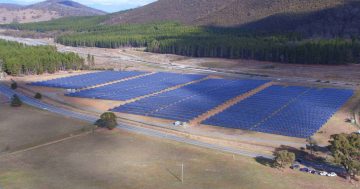
Canberra businesses need to start gearing up for the Zero Net Emissions target.
When making major investments in goods, businesses and individuals must weigh up many factors before making a decision, including value for money over its anticipated useful life.
The average lifespan for a gas oven is 15 years. In our own homes, this is one of those set-and-forget appliances, we only have to worry about buying a new oven a few times in our lives.
But imagine you bought an oven and after just 12 months found it no longer functioned – not due to any problem with the oven itself but because the gas supply to your house had been permanently turned off.
The ACT is rapidly moving towards achieving zero net greenhouse gas emissions by 2045. While that may seem a long way off, businesses have to start planning for changes now – particularly when it comes to major investment decisions.
Yet to make these decisions in an informed manner, businesses need to understand exactly what is being planned and the steps that will be taken to get there.
In 2020, when the ACT is powered by 100 per cent renewable electricity, natural gas will become the second main source of emissions after transport.
This would make it logical for a reduction in gas use to become a focus of future policies. In its Zero Net Emissions discussion paper, the ACT Government listed transitioning off natural gas as a priority.
The discussion paper states: “As the ACT will no longer generate any emissions from electricity by 2020, the pathway to zero emissions will need to focus on the remaining sectors, especially transport, gas, waste and land use. These sectors are likely to be more challenging and will require greater involvement from the community.”
Involvement from businesses will be particularly important if the ACT is to meet this worthy goal. Canberra businesses are outstanding community members and will want to do their part but achieving these targets will be at their cost and effort in large part.
Gear up for change
Canberra businesses need to start gearing up for this change, but until they know what the future will hold, it is almost impossible for them to do so.
An increased sense of urgency is needed from both the public and private sectors if the transition to zero net emissions is going to proceed smoothly.
When Australia moved from analogue to digital television, the public got a decade of ‘warning’ and clear direction of what the change meant and what people needed to do to prepare for it.
Similar investment in an education and information campaign must accompany the transition to zero net emissions.
In its submission to the Zero Net Emissions inquiry, Canberra Business Chamber called for appropriate support arrangements to be put in place to ease the cost of transition and ensure ACT businesses do not become uncompetitive during the changeover. This should include support to ameliorate capital expenses relating to transition.
Other ways to incentivise business could include a recognised accreditation scheme. If consumers are encouraged to support early adopters, the more motivated businesses will be to take the lead. An incentive scheme also provides local businesses with an opportunity to link the CBR brand to clean, green and competitive practices.
Chair of the CBC Innovation Taskforce, Dr Lyndal Thorburn, also stresses the potential for Canberra’s emerging technology-based businesses working in renewable technologies and associated services to work with the ACT’s early adopters to prove their market potential. “The ACT Government can strengthen this opportunity by supporting industry to procure specific assistance and by attracting other new players to the region,” she says.
Painless transition to zero net emissions is achievable, and there are clear potential benefits in doing so, but we all must work together and start preparing today.





















